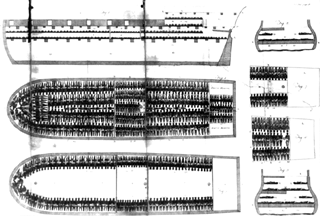The Amistad

Full Text of President John Quincy Argument to the Supreme Court
At 4:00 AM on July 2, 1839 20 miles off the shore of Cuba, Cinque led a slave muitiny aboard the Spanish vessel "Amistad". They killed all but two of the crew. Instead of sailing back to Africa the ship ended off Long Island. There it was captured by the USS Washington. The slaves were seized and imprisoned. The owners of the slaves began proceedings to obtain the return of the their "property". Attorney Roger Baldwin was hired to defend the slaves. He based his argument on the fact that the slaves were not born in Cuba, but had been kidnaped from Africa, thus their slavery was illegal. The slaves according to Baldwin had the "natural right" to be free thus they were just acting in self defense. The US government took the position that the slaves needed to be returned under the terms of the Pickney Treaty. The former slaves demanded their freedom under a writ of Habes Corpus. That was denied by Associate Justice of the U.S. Supreme Court Smith Thompson. He stated in his decision that it was up to the district court to decide if the slaves were property or not. The presiding judge in the case was Andrew T Judson. He rendered an opnion that the slaves had been illegally kidnapped and should be returned to Africa. The government was surprised by the decision, and appealed the decision. The appeal court upheld the decision. The government then appealed the decision to the US Supreme Court. The abolutionist then requested 73 year old former President John Quincy Adams present the case to the court. He agreed. Adams delivered an emotional eight hour appeal to the court asking the the African be set free. Justice Story wrote to his wife about Adams arguments: "extrodinary for its power, for its bitter sarcasm, and its dealing with topics far beyond the records and points of discussion." The Supreme Court rendered an opinion in favor the Africans and they were set free.
 >
>